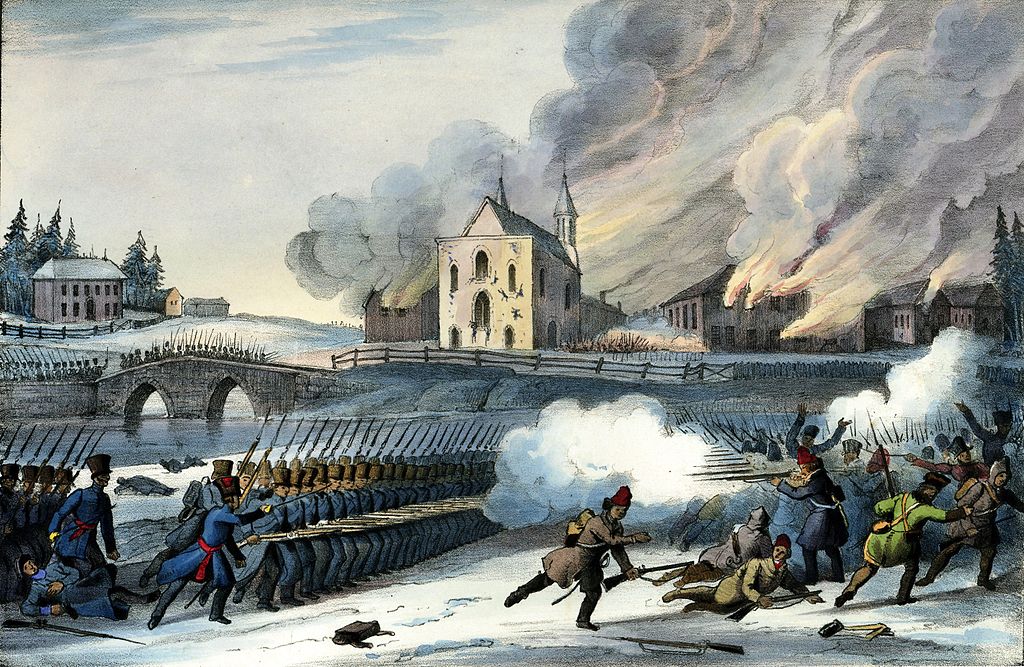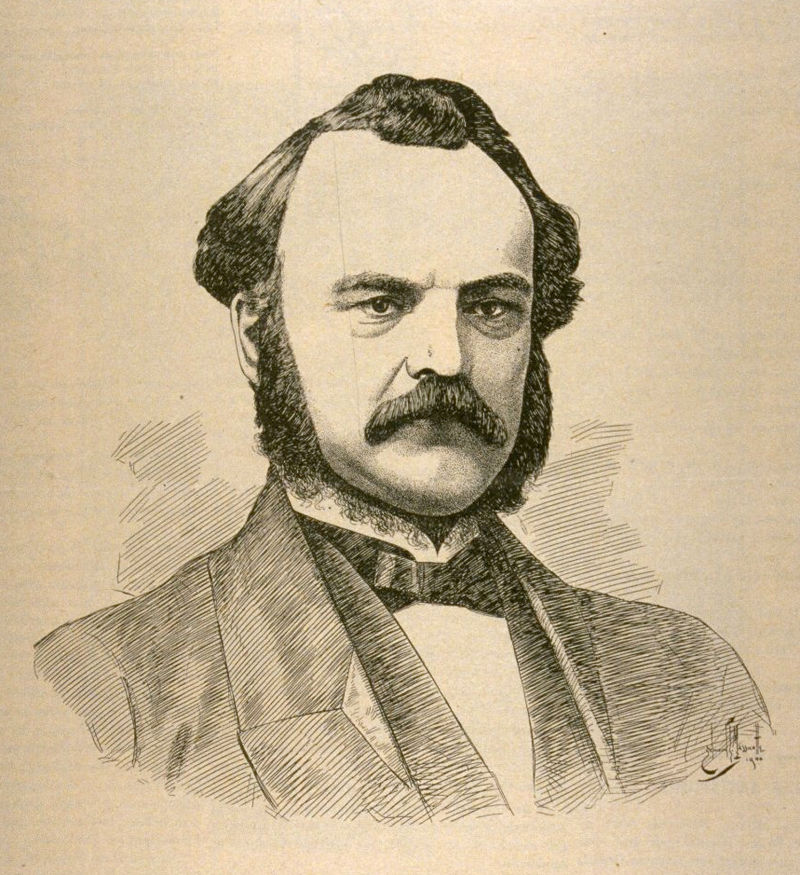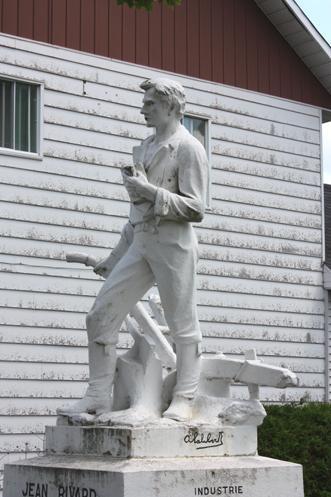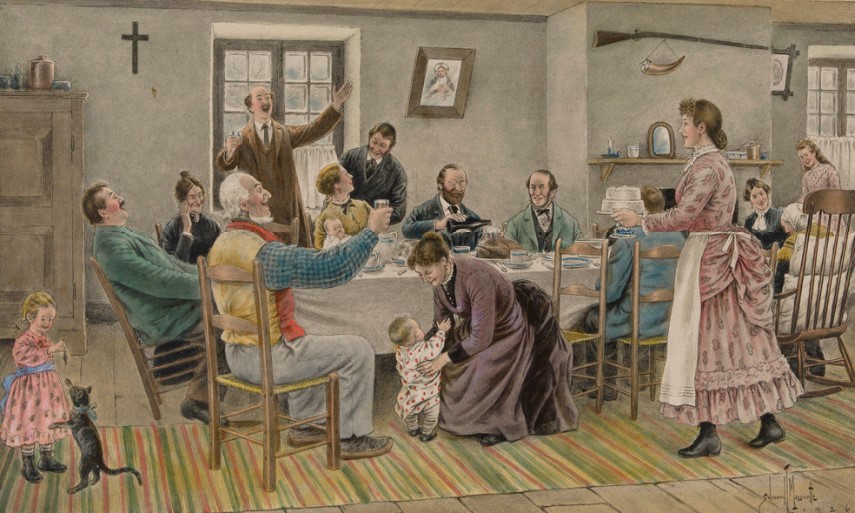How easily we overlook what was happening in Lower Canada in the early 1860s. While bloody conflict wrecked Mexico, the American giant was embroiled in a devastating civil war that would claim 700,000 lives and lead to “a new birth of freedom.” For a time, it seemed that the winds of war would sweep over the northern half of the continent, especially as Anglo-American controversies intensified. When Canadian history in these crucial years is discussed on its own terms, our attention is most often drawn to political instability and the promise of railway construction.
From this blogger’s recollection of his school days (in a long-past semi-mythical era we call the first Bush Administration), the whole period between 1839 and 1867 was punctuated pedagogically only by the threat of assimilation under a new constitution and the emergence of responsible government. Flash forward to Confederation and, maybe, to a dominant and triumphant Catholic Church. Social history amounts to a larger share of the high school curriculum now than it did back then, but cultural history awaits its moment.

All this is to say that one is left with the impression that French-Canadian literature—mentioned, as it always is, in passing—was, in the 1860s, either undeveloped, hopelessly naïve and romantic, corrupted by Church influence, or some combination of the three. The standard, mandatory Quebec literature course in cegeps does little to complicate this view. To put it differently, early French-Canadian literature doesn’t speak to present concerns, at least not as meaningfully as the Patriots or the birth of a new federation.
Yet, from the early 1860s to the 1880s, the French-Canadian intelligentsia dedicated itself quite consciously to the creation of a nation and a national identity. The narratives developed in this period would remain central to Quebec self-definition and policymaking for a century—not so trivial.
I have discussed some of these issues in connection with Prosper Bender. This time, I am turning my attention to Antoine Gérin-Lajoie’s Jean Rivard, le défricheur, one of the more famous novels from this era. I would suggest that it provides much-needed intellectual context for Quebec’s great demographic hemorrhage as well as a glimpse into a cultural américanité north of the border.
Context
Jean Rivard, le défricheur and its sequel, Jean Rivard, économiste, originally appeared in the major literary magazines of the early 1860s, Les Soirées canadiennes and Le Foyer canadien. Though short-lived, both publications were major vehicles for the revival of Canadian letters in the 1860s; they also captured some of the most important literary voices of the day.

In these magazines, in newspapers, as well as in independent works published in Quebec City and Montreal, prominent authors sought guidance in the past. Ferland wrote a conventional history textbook; Aubert de Gaspé traced late eighteenth-century French-Canadian customs; Tanguay assembled an impressive, multi-part genealogical dictionary; Marmette wrote historical fiction meant to capture the romance of times prior. Casgrain and LeMoine also joined in the effort and Bender eventually wrote a biography that covered a century of Lower Canadian history.
Already well-known as the author of “Un Canadien Errant,” Gérin-Lajoie was in the middle of this creative frenzy. But Jean Rivard was a work unlike any other. It looked forward; it was programmatic. It wasn’t about the Jolliets and Marquettes and distinguished ancestors; instead, Gérin-Lajoie celebrated the heroes who might emerge in his own day. It was novel and, still today, we understand it as launching a whole new literary genre that would blossom in the next century: the romans de la terre, or littérature du terroir.
The end of Jean Rivard, le défricheur (published in several installments) appeared in August 1862. Instantly it earned high praise. In fact, official public consecration came only a month later when excerpts were published in the Journal de l’Instruction publique. The novel became a cornerstone of a new ideological orthodoxy in Lower Canada.

Rivard in Bristol
So, who was Jean Rivard? And what the heck is a défricheur? I won’t give away too much, as some of you may be inclined to read the novel. In Rivard, Gérin-Lajoie was imagining an alternative life. His character had his (Gérin-Lajoie’s) age; the village of Grandpré was a fictional stand-in for Yamachiche, where the author had grown up. Whereas he, Gérin-Lajoie, eked out a living as a clerk and civil servant, his character lived fruitfully on the land.
A défricheur is a person who clears and improves land to make it suitable for agriculture. And, several chapters into the novel, that’s exactly what Rivard does. Left with a meagre inheritance at the death of his father, the nineteen-year-old Rivard consults his parish priest, who encourages him to avoid the professions and to embrace, instead, the hardy life of a pioneer. It’s settled: Rivard buys a plot of land in the Township of Bristol (a fictional area set in the Eastern Townships) and, with hired man Pierre Gagnon, goes about turning his hundred acres into a thriving farm[1].
That Rivard does well for himself is made plain in an exchange of letters with his old college pal, Gustave Charmenil—letters that interrupt the plot and make Gérin-Lajoie’s agenda explicit. Charmenil is the convenient foil who struggles to earn a living as a clerk and an attorney in Montreal. Lord Durham had already commented on the overcrowded professions of Lower Canada in the late 1830s. But Gérin-Lajoie’s case wasn’t purely about competition and the economic challenges of a white-collar career. Urban mores were false and would ruin a person morally as well as financially. Rivard, by contrast, was contributing to the prosperity of his peuple and remaining true to his ancestral customs, faith, and virtues.

Gérin-Lajoie lays it on pretty thick—we are made to believe that there’s really nothing to this work, nothing particularly daunting for a person with the right character and work ethic. (Rivard has taken labor omnia vincit as his personal motto.) Everything works out, as it should. But what about illness, conflagrations, natural disasters, bad harvest, the inability to access credit…?
Belatedly, in Chapter XVII, the author acknowledges these likely setbacks. But just as quickly as they appear, he brushes them aside:
Jean Rivard didn’t presume to be better protected from these unexpected disasters than other people. From the moment he had embraced the life of a défricheur, he had recognized that it wouldn’t come without its share of disappointments, obstacles, and accidents, and he was prepared to bear with courage and equanimity all difficulties he might encounter. But, thanks to Divine Providence, which seemed to take our hero into its care, his fifteen arpents of grain and vegetables matured without any serious accident.
What did that say about the families whose crops did go up in flames, as happens in a later roman du terroir? And how would people actually working from the sweat of their brow—those who weren’t ideologues—have greeted this idealization of farm life? Would Gérin-Lajoie have been so romantic if he had spent one season chopping trees and another trying to smoke out the wheat midge, expecting fully to go hungry for months at a time? As a latter-day Gustave Charmenil, did he exaggerate what he felt he had missed?

I know: it’s easy to pick fights with dead people. I recognize that our late-modern paradigm is by nature hostile to the kind of naïve (even if self-consciously naïve) romanticism we find in Jean Rivard. But the four decades leading up to the book’s publication—the entirety of the author’s life really—offered ample evidence that all was not well in Lower Canada’s countryside.
It wasn’t just the wheat midge. The increasing commercialization of agriculture, overpopulation, limited opportunities for paid labor, the problem of rural debt, and yet more contributed to dire straits for the Canadian farming class. Nor was it simply structural problems. What happened when a head of household was gored by a bull and laid to rest before his fortieth birthday?
Ultimately, the story of Jean Rivard as a défricheur comes to an end—but it does not conclude. Without an unravelling, there cannot be a moment of resolution that would bring the characters into a new, blessed state and prove satisfying to the reader. But there may be another reason: it may well be that Gérin-Lajoie had planned the sequel, Jean Rivard, économiste, all along.
[1] Although I strongly believe that this was unintentional on the author’s part, there is an easy contrast to be made between this fictional Bristol Township and the real Bristol County, in Massachusetts, where Fall River is located and where French Canadians were finding industrial employment in ever-rising numbers.
Tune in again next week for further analysis of Rivard, including discussion of American influences and clerical nationalism.
Leave a Reply